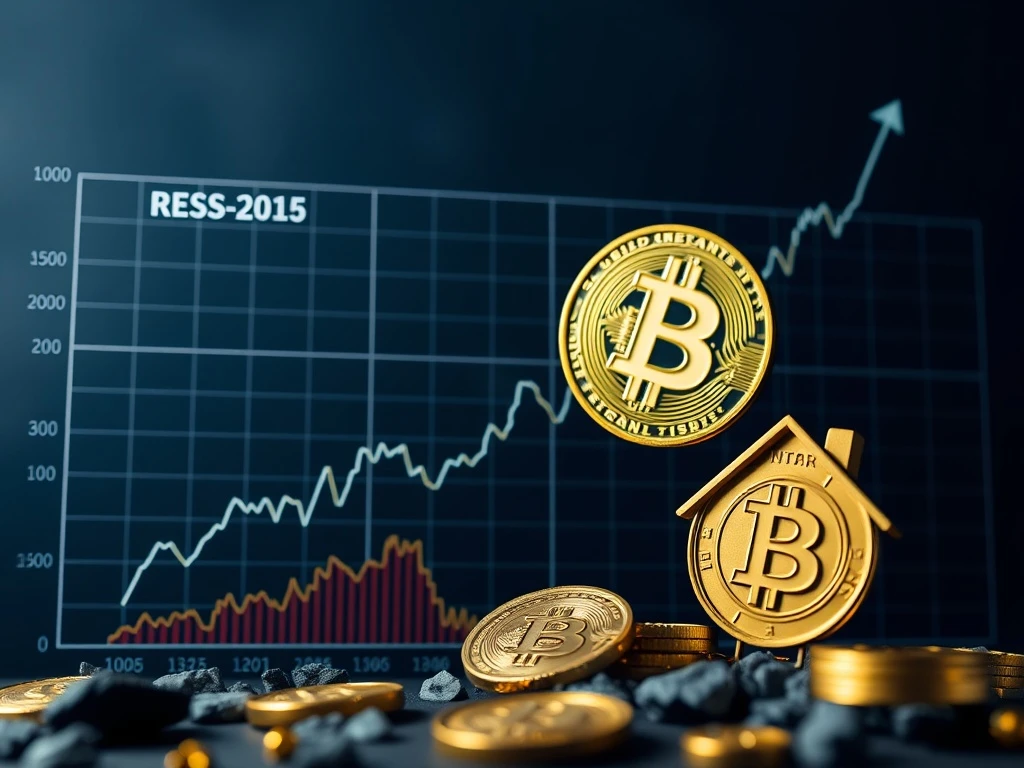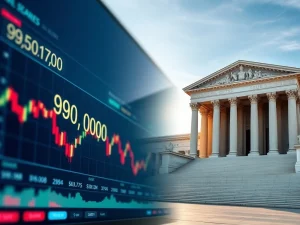Urgent Warning: US Debt Surge & Recession Signals Threaten Bitcoin Price Below $100K?

Bitcoin’s recent price movements have captured significant attention, but a closer look at macroeconomic indicators, particularly the state of the US debt and potential recession signals, raises important questions for crypto investors. Could these factors trigger a sharp correction, or is Bitcoin poised to defy traditional economic headwinds?
Understanding the Growing US Debt Problem
The United States’ national debt recently hit a staggering $36.6 trillion, adding $367 billion in a single day following a $5 trillion increase to the debt ceiling. This rapid expansion of the US debt is a critical economic factor that analysts are watching closely. Historically, rising debt can lead to concerns about inflation or, conversely, the government’s ability to manage its finances, potentially impacting investor confidence across all asset classes, including the Bitcoin price.
Are Housing Market Signals Flashing Red?
Beyond the national debt, the housing market is showing signs that historically precede economic downturns. One key metric, the inventory of new single-family homes, is approaching a 10-month supply. According to some analysts, this level has only been seen during or immediately before a recession. The weakness appears linked to high interest rates and a perceived ‘demand evaporation.’ If this historical pattern holds, it could pressure risk-on assets like Bitcoin as investors move towards safer havens like cash or short-term bonds.
The Federal Reserve’s Role and Monetary Policy
The actions of the Federal Reserve are paramount to understanding the potential trajectory of the Bitcoin price. While some argue that macro concerns like debt and housing could hurt Bitcoin, others suggest the government’s likely response—expanding the monetary base (essentially printing money) rather than defaulting—creates an environment ripe for a Bitcoin rally. The speculation surrounding potential shifts in leadership at the Federal Reserve, specifically concerning Chairman Jerome Powell’s position, adds another layer of uncertainty. A more dovish stance could lead to lower interest rates, potentially boosting risk assets, while a hawkish approach could have the opposite effect.
Bitcoin’s Correlation with Traditional Markets
Despite its decentralized nature, Bitcoin remains significantly correlated with broader equity markets, particularly the S&P 500. Data shows a correlation around 68%, meaning they often move in similar directions. This close tie means that risks impacting traditional markets, such as rising US debt concerns, potential recession fears, or even trade tensions affecting sectors like tech, can directly influence the Bitcoin price. Strong institutional inflows into Bitcoin ETFs are a positive sign, but they don’t entirely decouple BTC from the performance of traditional stocks.
Navigating Conflicting Signals: Correction or Rally?
The current economic landscape presents conflicting signals for the Bitcoin price. On one hand, exploding US debt and worrying housing market data point towards potential recession risks that could trigger a correction, possibly sending Bitcoin towards the $95,000 level as investors de-risk. On the other hand, the prospect of monetary expansion by the government and potential dovish shifts at the Federal Reserve could fuel a rally. While some data points suggest potential for higher prices, even a new all-time high in 2025, the immediate concern for many traders is how risk assets will fare amidst these complex macro pressures.
Summary
The surge in US debt and troubling signs from the housing market introduce significant macroeconomic uncertainty. These factors raise the specter of a potential recession, which could negatively impact the Bitcoin price due to its correlation with traditional markets and a general move away from risk assets. However, the potential for monetary policy responses from the Federal Reserve, such as expanding the money supply, offers a counter-narrative that could be bullish for Bitcoin. Investors are currently weighing these conflicting signals, making the near-term price action highly dependent on how these major economic forces unfold.









